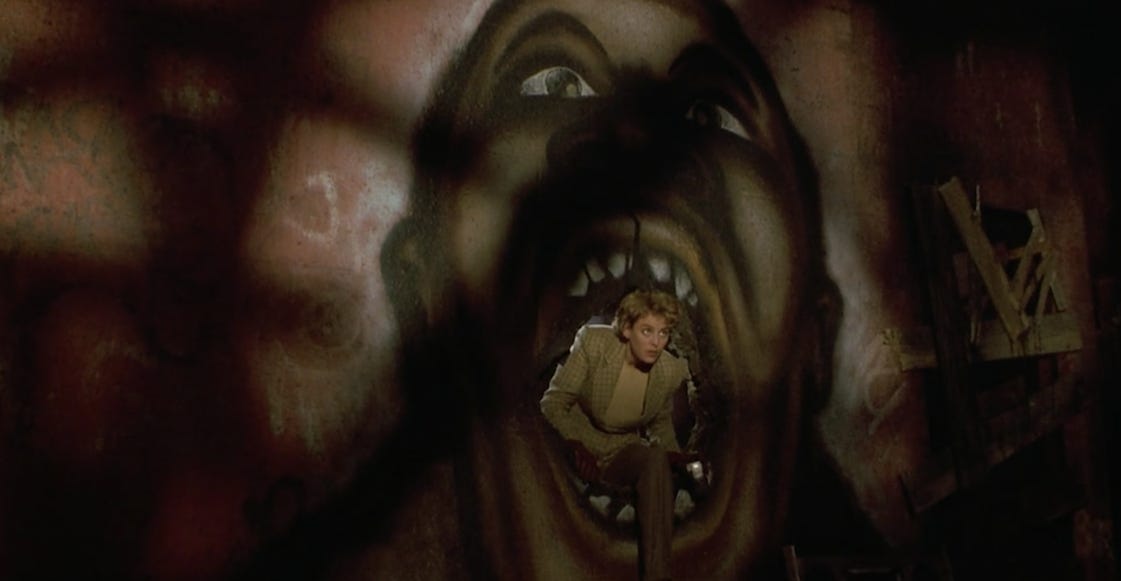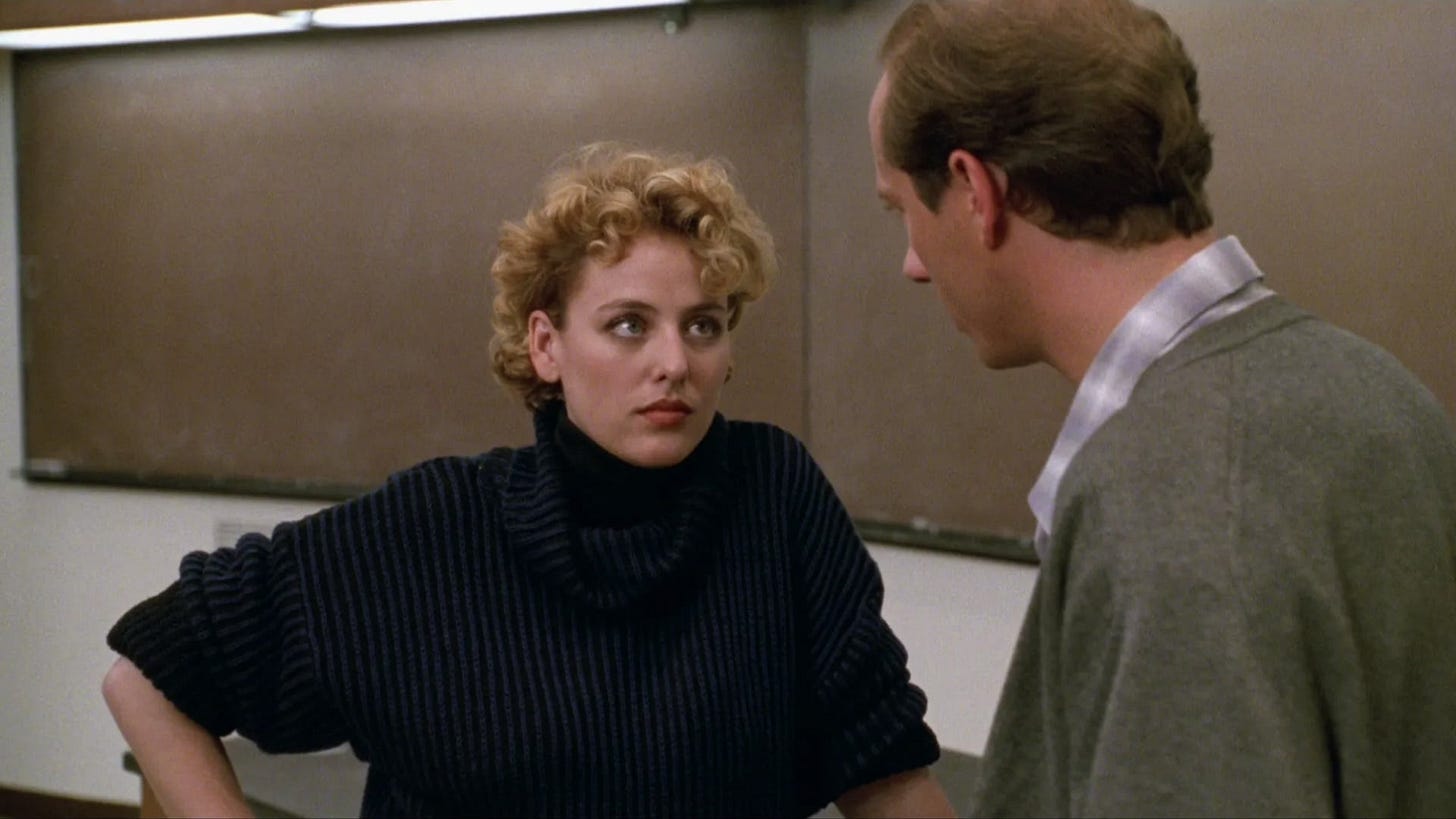Modern Folklore: The Case of Candyman (1992)
And Arne-Thompson-Uther 507A
folklore
/fōk′lôr/
(noun)
1. the body of expressive culture shared by a particular group of people, culture of subculture.
Candyman begins with a retelling of what we might construe as modern folklore, of which the urban legend is a type. A young woman recounts the legend as she's heard it. A monster with a hook for a hand can be summoned simply by calling his name under special circumstances. "If you look in the mirror and say his name five times, he'll appear behind you, breathing down your neck." At this juncture, we have no idea why he murders, which is part of what makes the tale so gripping. Virginia Madsen's character Helen, in true academic fashion, types this first-hand retelling of the legend into her computer database. Fortunately (or unfortunately) for her, the cleaning lady overhears the audio recording that Helen's transcribing and because she's familiar with the area (Chicago's now demolished Cabrini-Green projects), she's aware of the Candyman legend. She even has a friend who knew one of the victims.
The film was produced by Clive Barker, whose short story "The Forbidden" was the inspiration for the film. The setting of Barker's native England was changed to the USA's Chicago, with all of the socioeconomic nuance and dystopian ‘80s feel that this entails. Funny enough, I've read "The Forbidden", and although it is a beautifully told and expertly-written story, Candyman is a film that perhaps exceeds the story. It's one of only two films that I can think of that is better than the literary work that inspired it. "Blade Runner" (based on Philip K. Dick's "Do Androids Dream of Electric Sheep") is the other. I discussed aspects of that film here.
But the purpose of this post is not to recount the film. Frankly, you just need to see it. Unfortunately, Candyman was remade a few years ago, but the original is a must-watch for all horror aficionados. Where it shines is in its beautiful cinematography, poignant musical score, and pitch-perfect performance from the cast, including Virginia Madsen. These traits are atypical of horror movies, whose audience is generally in it solely for gore and a scare. But Candyman is more than simply a gripping and original horror film. The narrative hones in on elements of modern folklore and its possible antecedents: folk tales and fairy tales.
The Candyman story can be regarded as an urban legend, which is essentially a tale with frightening or humorous elements; a story that’s generally regarded as true but for the most part is not. In this regard, the urban legend is similar to folk tales and fairy tales, which also may have roots in historical events, but are perhaps farther removed from reality. The term urban legend has been in use since the 1960s, when it was described by academic Richard Dorson, a folklorist at Indiana University. Some aspects of urban legends that are distinct from folklore in general are the elements of urban landscape, things like housing projects (or council estates in the UK), bridges, overpasses, et cetera. The “Bunny Man” urban legend famously involves a local overpass.
A Cabrini-Green building being demolished (more than a decade after the film).
When I was in college, I had to read a chapter of Vladimir Propp's "Morphology of the Folktale," which delved into specific aspects of Russian folktales and presented a classification system distinct from the Arne-Thompson Index that is still in use today (with some modifications). The Arne-Thompson Index (now called the ATU with the addition of another academic called Uther) basically is a list of common tropes in folktales, and it assigns an index number to stories, allowing them to be regarded in the context of other known stories. So for example, "Beauty and the Beast" is classified as ATU 425C, or "The Animal as Bridegroom," which is a sub-type of ATU 425, "The Search for the Lost Husband." Arguably, one of the purposes of such a classification is to document the origin or spread of these stories in the so-called Proto-Indo-European lore, as many of these stories have counterparts across Europe and the Near East.
I tried to figure out which type in the ATU Index Candyman belongs to, and one possibility is ATU 507A, "The Monster's Bride." In this type, the bride has magical powers given by a monster, and if you've seen Candyman, Virginia Madsen's character Helen does eventually lose her life to the Candyman monster, but in typical Barker fashion she becomes a bride of sorts. As Candyman's bride, Helen takes her revenge on her original husband, who was sleeping with one of the students in his university course. Her magical power is perhaps Candyman's Machiavellian desire and ability to destroy, an ability which she now finds herself imbued with, albeit for different reasons and purposes. "Sweets to the sweet" as Candyman says in the film. But what's so great about Candyman the film is that it represents a bridge between traditional folklore interpretation and the urban legend. Candyman isn't just an ATU 507A, but it's rooted in the modern, soul-crushing landscape that is crucial to the urban legend. In the film, this urban landscape takes the form of housing projects that are either torn down as unsightly warts that are too grim for the elites that do not wish to see them, or are converted to luxury condos for the selfsame elites. There's something absurdly contemporary about this dynamic. Well done, Clive Barker and Director Bernard Rose.






